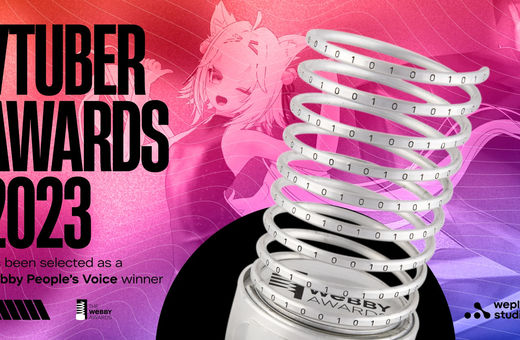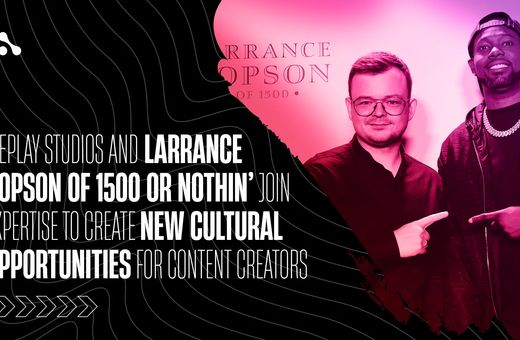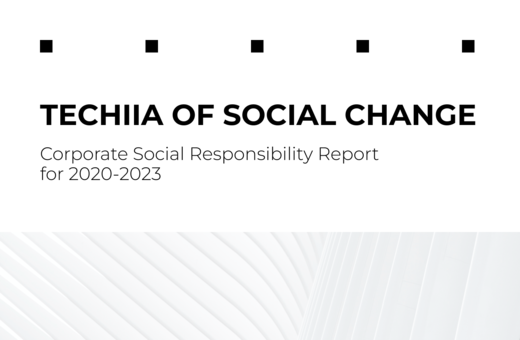
7 tips on how to stop doing everything yourself.
Ivan Rogovchenko is TECHIIA’s Chief Design Officer and also the Projector’s "Design Team Management” course curator. He has been working in design for 15 years, and three of them he has been leading creative teams. Ivan told Telegraf.Design about what problems the designer faces as a project manager and how to handle new tasks. This is the second article of the series on the transformation of a designer into a manager
In the , we looked at how a bizarre idea to become a manager can get into a designer's head and also debunked several myths at once. For those who decided to take a managing role, I gave two mantras that will help from the start of this career.
This time I will give the first seven recommendations for working with a team. They are united by the single slogan "stop doing it yourself". These recommendations will help you become an executive instead of remaining an executor.
Delegate
This is maybe the most initial thing to learn to become a manager.
Once you get used to doing everything yourself (and this is what every professional faces when gaining more experience), be ready for great temptations.
To start delegating, you need to kick such a habit and start giving tasks to others. Introversion, independence, the desire to be good enough for everybody generate resistance. Sometimes such resistance is so strong that you start negotiating with yourself.
Here is such an example. "Instead of wasting ten minutes to formulate tasks and get others to do it, I’d better complete it myself."
This kind of thinking might cause harm. In 90% of cases, when you try to complete someone else's small task yourself, a lot of nuances will come up and you will end up wasting a lot of precious time doing someone else's work.
Not so long ago I had to create a presentation. It was on Friday and the task seemed quite small. I didn't want to set this task to anyone from the team right before the weekend, so I decided to do it myself.
In about an hour since I started doing it, I was asked to join a meeting where the whole team received a task that was to take all weekend. As for my presentation, I had to put it aside to complete the urgent task. As a result, on Monday I sent a draft of the presentation to my colleagues asking to finish it, but they even had to make it from scratch.
This is a habit I still can’t completely get rid of, but at least I make this mistake much less than before.
It is also important to understand the concept itself. I define the term "delegate" as follows: to set the understandable task and get a result that can be shown to the public or passed to the next stage of design/development.
And yet you say WHAT to do, not HOW to do it.
Also, try not to be in charge of every small step and do not treat your team like juniors, just because you know everything better. You might need to do an onboarding or introduction to all processes for the rookies, but that's it. Because trying to control everything and telling your team how to do their job will eventually lead to consequences:
- The team will stop generating solutions. Everyone will start doing only what you say.
- You will be involved in all the tasks, even the small ones. Yes, you might cope with it in small teams (and still you will have a lot of overtime), but when scaling you lose the context and can neither dive into the task deep enough nor give proper recommendations.
And one more thing. Delegation is not micromanagement. No need to tell which font or layout to use. Give the person a piece of work and verify the result only. Gradually, you will trust people more and dive into the process less.
Synchronize
This one is about another side of the delegation process. To Delegate is not to set the task in any way you like and forget about it. It's up to you to make sure the employee is on the right track. This is especially relevant for new people in the team.
One day I was in the rush and asked a colleague to make a small presentation with a commercial offer. A day and a half later I got a great result, but not the one I needed. It turned out that my colleague understood that task in another way, so, as a result, I had the wrong messages, content, and the wrong brand book. And we had to spend another day and a half redoing everything.
My mistake was that I did not make sure that the performer understood the task the same way that I did, and I didn't check the work at any stage.
The recommendation for designers is to always align the essence, purpose, and tools with your manager. And the manager’s task is to synchronize with the performer.
For example, you are setting a task that will take a day. Take some time (30-60 minutes) to ask whether the employee has chosen the correct solution. By "correct" I mean that the performer can show the result by the end of the day with available resources. In another two or three hours, make sure that the employee is on the right track. And check the result at the end of the day.
In the perfect world, the company should have all the standard processes and criteria for accepting a design task written down. In that case, there’s no risk of inconsistency.
In real life, the design process is a very dynamic thing. The pace of work in our holding companies differs.
WePlay Esports, for instance, represents the esports industry, where you need to constantly be ahead of the market. We have had to create an identity for some tournaments just a couple of hours before their start. Guidelines had to be often passed on with words. But even at such a pace, we have assembled a full-fledged guide and brand book to systematize ourselves and onboard new colleagues.
Detach Yourself
Do you remember the manager's first mantra? "You no longer create — you provide the conditions for others to create."
That's why NOT creating is highly important.
Once you start working as a performer (discussing concepts, offering solutions, and even creating some small design solutions) while being a manager, you involuntarily become completely involved as a co-creator of the product. Worst of all, you become emotionally attached to your ideas and start pushing them. Therefore, you can no longer see the result competently.
Detach yourself from the work of your team. Take a helicopter view, outline the area where you do not take part in. Then you will give better and more competent recommendations. In a few iterations, you can get a vastly superior result. It will be better for both you and the team.
One of the turning points for me happened in May 2019. WePlay Esports held its first LAN tournament at the VDNG in Kyiv. I was involved in the making of the general concept only, and all the rest was done by the team. For the first time in my life, I was not involved in the process that deep and I saw specific visual elements only when the tournament went live.
And it was absolutely amazing
As a result, I clearly distinct creative and management roles. Designers, team leads, art directors are engaged in the mood boards, brainstorms, creation, small details, while my part here is about setting the task, the budget, the hiring, and setting clear expectations from the creative process.
It is very difficult for new managers to step aside and not dive deep into the creative process. It seems that you simply cannot stop controlling every step, because there might be wrong fonts, wrong colors, or the whole project will be blank and boring.
But give yourself time, don't try to be the Perfect Manager. Try to give more freedom instead. Step by step, case by case. And for this, you need to choose the right people who know their job and share the same values. I will tell more about it in the next article.
Be Open to Others’ Solutions
While performing as a designer, you are used to seeing your visual solution for each task. But now, being a manager, you need to get used to the fact that the team will often bring you something completely different.
But how to properly evaluate the result?
Here's a story about corporate identity and a little schizophrenia.
WP Merchandise!, a premium plush toy manufacturer, became part of TECHIIA a few years ago. We started creating a design team for this project, and at the same time started working on some branding options.
One day after work, we were discussing the complex process of turning a model into a toy with Oleksandr Taranenko, our Creative Director. And somewhere along the lines, we came up with a company logo prototype and drew it on a napkin. I remember myself thinking back then: “Well, half the work is done."
In a few days, the new Head of Design Tonya Sidachova joined WP Merchandise!. Her first task was to wrap up the company's corporate identity.
When Tonya came to me with her concept in a couple of weeks, my mind split. Her option was amazing. And, well, it was nothing close to what Oleksandr and I came up with. It was perfect. But different!
I’m sure you noticed that when I got into the logo creation process, I completely ignored the "Detach Yourself" rule. And that's why I fell in love with our idea, I was already part of it.
I had admiration and selfishness fighting inside me all evening. In the end, I admitted that Tonya did an amazing job and made a beautiful, thoughtful style. And I let our idea go.
WP Merchandise! started evolving visually as seen by Tonya, not me, and in a really beautiful way. And luckily I didn’t get into someone else's creative space and imposed my version on the team, just because it was mine.
Do not adopt what coincides with your opinion. Adopt what is done well and is solving the problem.
These two options can be fair at once, but the second one should always be in the first place. Not limiting your colleagues' views, will help them come up with a way better result than you could even imagine.
Let the Team Focus
The overall process is accelerated once each designer is focused on his/her task.
This is not a popular opinion. But my and my colleagues’ best practices confirm it. I had different-task jobs, including the all-in-one jobs. So I understand how proper focusing helps to be less tired, nervous, and burned-out.
Twelve years ago, I worked in printing and my team was working with prepress magazines. We always had layouts coming too late so we had to do everything asap and even with delays. It was quite frustrating but we could not do anything about it. And then we came up with an internal assembly line. While some employees were retouching, others were correcting, and the third ones collected everything in Quark. Only then did we finally start making everything on time.
Now in the holding, we build processes in a way that people do not switch between different types of tasks. The team has very different roles ‒ from product to motion designers.
There’s no risk that a person will get tired of doing the same thing over and over again. The designer constantly shifts between different processes while improving his/her skill level and gaining much deeper expertise.
We follow the same approach when hiring. For example, we hired a person with a lot of certificates and wide knowledge in different directions, but in practice, we found that this designer was too scattered and did not have any in-depth knowledge and skills. Now I look at the numerous certificates with caution, especially if these certificates are from very different areas.
One might say: "Wait a minute, there are T-shaped specialists, cross-functional ones, and all-in-one jobs, just like yourself back in the days."
In my opinion, the horizontal stick in the letter T is held on a strong vertical ‒ that is, profile skills. The more you improve your skills set, the more you start diving deeper into the context of related areas. For example, you can just create banners. Or, you can understand how they work and how to make them more informative and that thousands of people will want to click on them.
My approach is that you should hire those who are good at something specific. A generalist is a good option for a managerial position but given that he/she has deep profile expertise in at least one direction. For example, I have a UX design deep profile expertise, and our Creative Director has deep expertise in graphics.
Notice: this rule works poorly for startups. Everyone there is usually a one-man band. It’s a common misconception that, for instance, the Product Designer is obliged to do advertising, create interfaces, and conduct research. But when a company starts scaling, employees have to focus on specific tasks which they are good at.
Go Beyond The Limits
A chilled designer = a good designer.
Allow employees to make mistakes and take responsibility for the result. Give your team a chance to experiment, and sooner or later it will be a success. People must go beyond their limits.
We have a small exercise for some types of tasks in our company. We imagine that we have all the world's resources: all the money, specialists, equipment. And the fantasy unfolds to the fullest.
A ready-made unrealistic idea, if it is a great idea, can be gradually brought to reality with resources available. But this does not work with a bad idea.
We don't even pay attention to one mistake. It's a part of the process. But if the designer makes mistakes over and over again, it is worth a deeper look. It might turn out that you’ve made a mistake as a manager:
- You have briefed badly
- You have provided a wrong methodology
- You have entrusted the task to a person whose skills are not enough to perform it
It’s easy to check all these options and none of them are related to any limitations of creative freedom.
Let The Team Work With Their Brains
This might sound obvious, but let designers twiddle their thumbs. Part of the design process is the background brain-work.
For example, when I needed to create a design concept, I usually spent several days assembling moodboards from other design concepts, checking Behance, Pinterest, Dribbble, putting tons of images into my brain, diving deeper into the topic, and sketching a bit. Then I had a day off (it is a must). And after a good sleep and a good rest, the concept was born.
It worked out for me dozens of times. I’m pretty sure everyone had something similar. Not surprisingly, this is a scientifically well-proven way to create things, described in the "" book.
Do not force colleagues to stay at their workplace all the time. There are a lot of jokes about the fact that when a designer plays, walks, or sleeps, he/she works. And it's true.
The designer must have time to think about the decision before making it. If the designer is constantly working with the hands, not with the brain, there will only be superficial decisions.
Yes, sometimes there is a time limit, you have to take the first-best option. But in more balanced conditions we have three or four iterations before making a final decision. And it turns out to be a really good decision which makes us rarely return to previous options.
A new manager might doubt that such an atmosphere will make designers completely relaxed and unwilling to do their work. But fear not. Such a super-freedom is perfectly balanced by goals and deadlines.
And on how to form and lead a team, why a 'family' metaphor is bad for it, we will talk in the next episode.
Original article on .


